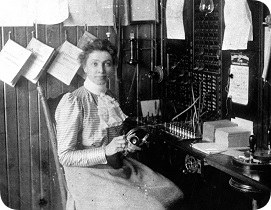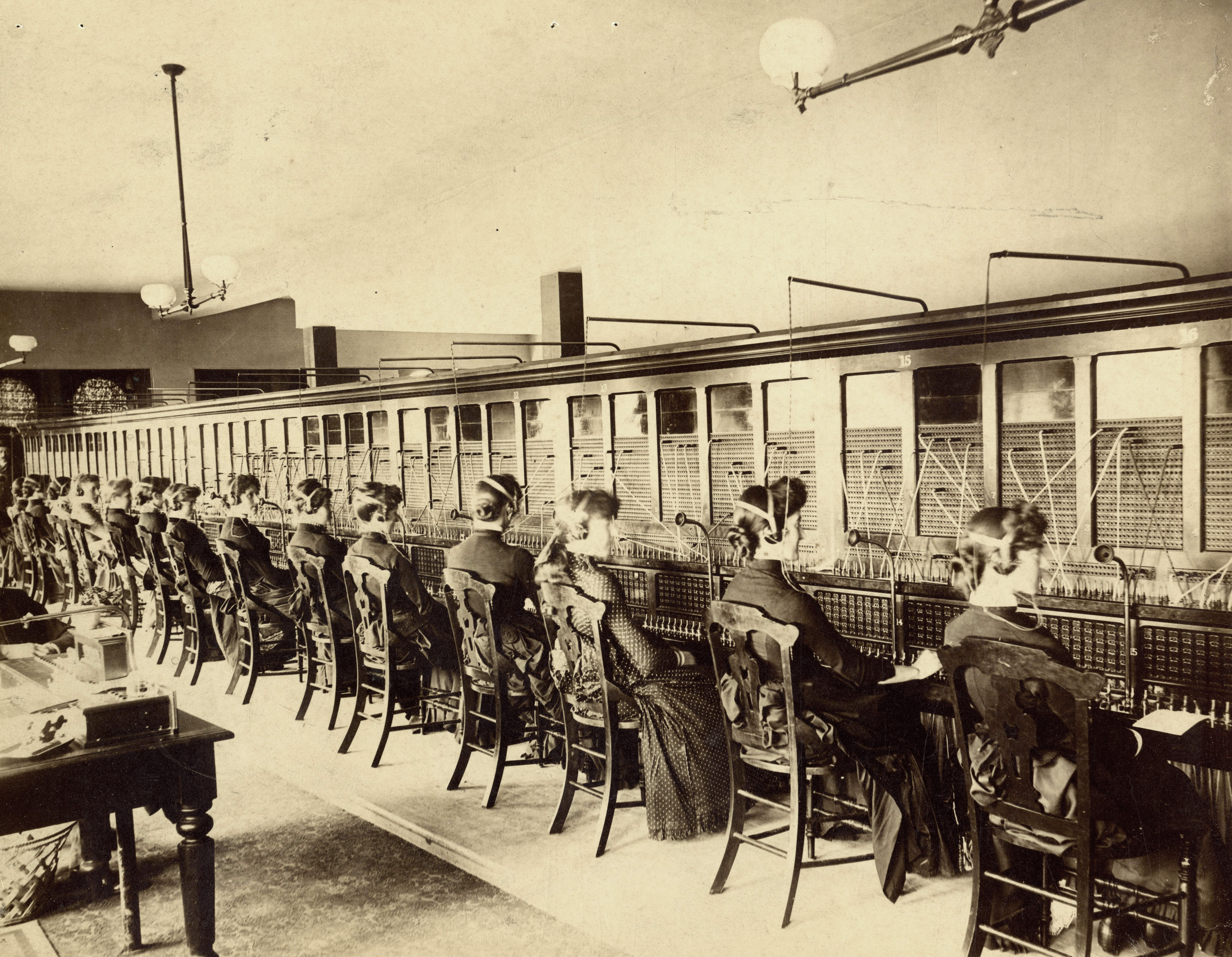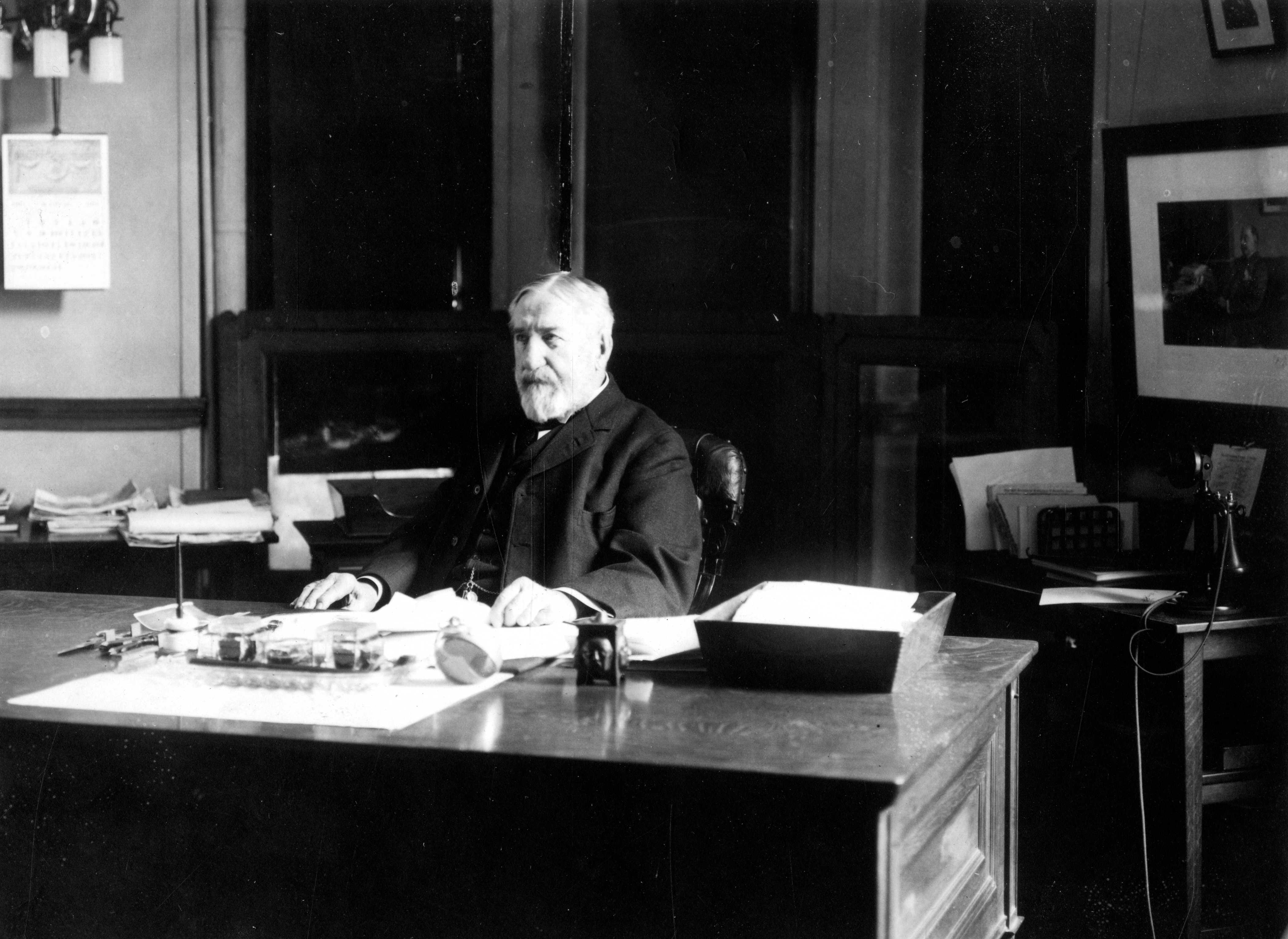
Bell employees A. T. Smith and R. Freeman, Brockville (Ontario), 1881
Building a
national network
Technology

Bell construction gang posed for the photographer somewhere on the road between Napanee and Deseronto (Ontario), 1895


Miss Ida Gardner, first operator in Winchester (Ontario) at switchboard, around 1897

Wooden roof fixture carrying subscribers’ lines into the telephone office on Colborne Street, Brantford (Ontario), 1902
Until the end of 1882, these phones were connected to the operator with iron and metal wires strung across trees, fences and roofs using the ground to complete the power circuit. These wires were soon replaced with copper pairs, producing the first early upgrade to our telecommunications infrastructure.
The operator would manually connect these calls using a magneto switchboard supporting a number of pairs carried by early transmission cables. The early operators were an essential part of the Bell network and the true voice of our company, connecting calls and sharing useful information ranging from weather to time of day, election results and sports scores. You might say they were our CTV News/TSN broadcast team of the late 1800s.
Building a
national network
The people
The operator was a true reflection of the pioneering spirit of our first generation of Bell employees, who were also stepping into new professions as sales agents, clerks, foremen, maintenance workers and plant technicians.
Bell’s first construction teams, generally about 20 men, arrived at work in horse-drawn wagons for 11-hour workdays, 6 days a week. The linemen, as they were later called, were essential in building and expanding our early telephone network, erecting poles and running phone lines across Bell’s territory.

Photograph of Charles Fleetford Sise, Sr. was taken in his office at the company’s head office, 1914
Bell operators seated at a multiple magneto switchboard, “Main” central office, Montréal, 1888

Bell operators seated at a multiple magneto switchboard, “Main” central office, Montréal, 1888
Building a
national network
Construction
These construction teams were at the centre of Bell’s first long distance line, built between Toronto and Hamilton in 1881. By 1885, long distance lines were supporting all points from Montréal to Windsor, and by the end of the 19th century, Bell customers could call almost anywhere in Québec and Ontario and up to 1,000 miles into the United States.
The number of phone lines grew from 2,100 in 1880 to 78,195 in 1905, thanks to the tremendous efforts of the linemen who installed over 14,000 km of pole lines and 60,000 km of transmission cables. That doesn’t include the first underground cables, which were laid in Toronto for the first time in 1889.
When Charles F. Sise invested more than $20,000, financing part of the cost of the first long distance connection between Hamilton and Toronto, he began a passion for building our country’s strongest network. With our $1.7 billion capital expenditure acceleration program introduced in 2021, which will be completed in 2022, to accelerate fibre, rural and 5G network rollouts, we are proud to build on Bell’s 141-year passion for building the best networks and giving our company a critical advantage over our competition.

A Bell crew raising a 60-foot telephone pole near the corner of King and Dufferin Streets, Toronto, 1895
A Bell construction team laying underground cable on Queen Street, Sault-Ste-Marie, 1909

A Bell construction team laying underground cable on Queen Street, Sault-Ste-Marie, 1909